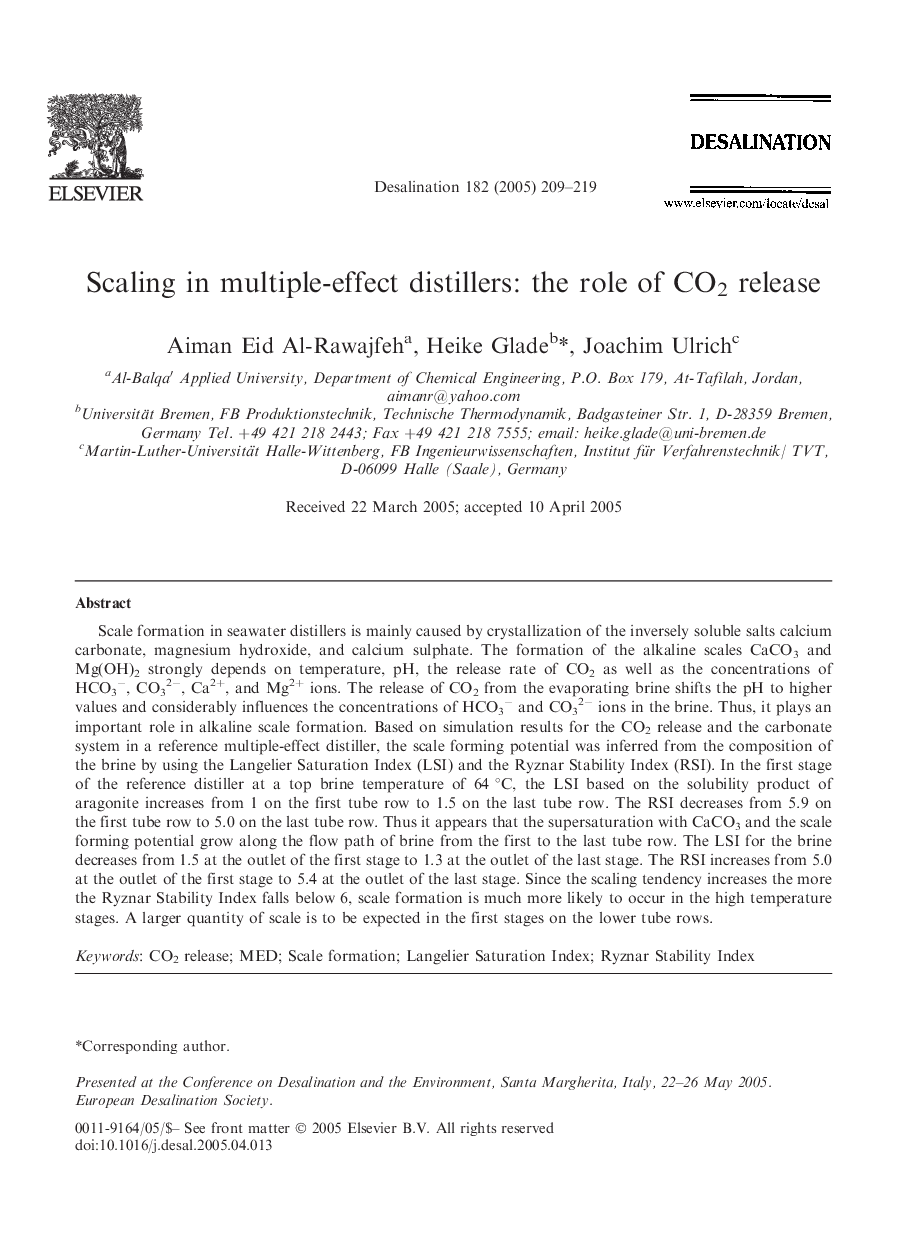| Article ID | Journal | Published Year | Pages | File Type |
|---|---|---|---|---|
| 9680977 | Desalination | 2005 | 11 Pages |
Abstract
Scale formation in seawater distillers is mainly caused by crystallization of the inversely soluble salts calcium carbonate, magnesium hydroxide, and calcium sulphate. The formation of the alkaline scales CaCO3 and Mg(OH)2 strongly depends on temperature, pH, the release rate of CO2 as well as the concentrations of HCO3â, CO32â, Ca2+, and Mg2+ ions. The release of CO2 from the evaporating brine shifts the pH to higher values and considerably influences the concentrations of HCO3â and CO32â ions in the brine. Thus, it plays an important role in alkaline scale formation. Based on simulation results for the CO2 release and the carbonate system in a reference multiple-effect distiller, the scale forming potential was inferred from the composition of the brine by using the Langelier Saturation Index (LSI) and the Ryznar Stability Index (RSI). In the first stage of the reference distiller at a top brine temperature of 64 °C, the LSI based on the solubility product of aragonite increases from 1 on the first tube row to 1.5 on the last tube row. The RSI decreases from 5.9 on the first tube row to 5.0 on the last tube row. Thus it appears that the supersaturation with CaCO3 and the scale forming potential grow along the flow path of brine from the first to the last tube row. The LSI for the brine decreases from 1.5 at the outlet of the first stage to 1.3 at the outlet of the last stage. The RSI increases from 5.0 at the outlet of the first stage to 5.4 at the outlet of the last stage. Since the scaling tendency increases the more the Ryznar Stability Index falls below 6, scale formation is much more likely to occur in the high temperature stages. A larger quantity of scale is to be expected in the first stages on the lower tube rows.
Keywords
Related Topics
Physical Sciences and Engineering
Chemical Engineering
Filtration and Separation
Authors
Aiman Eid Al-Rawajfeh, Heike Glade, Joachim Ulrich,
